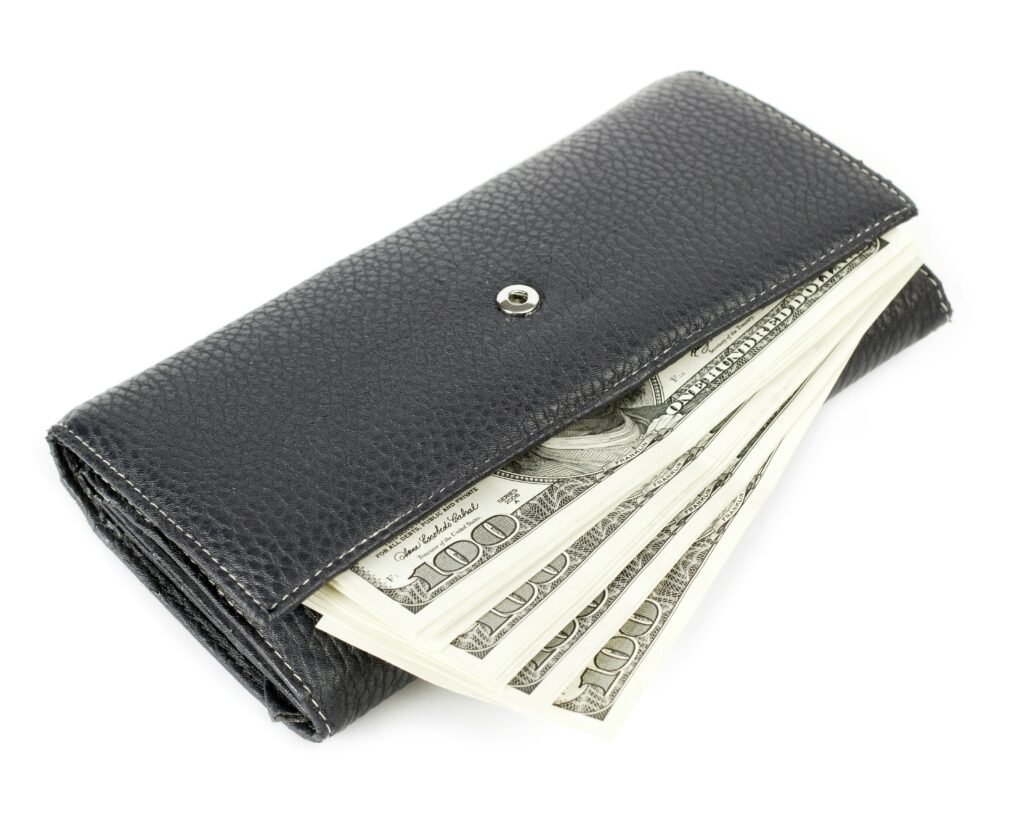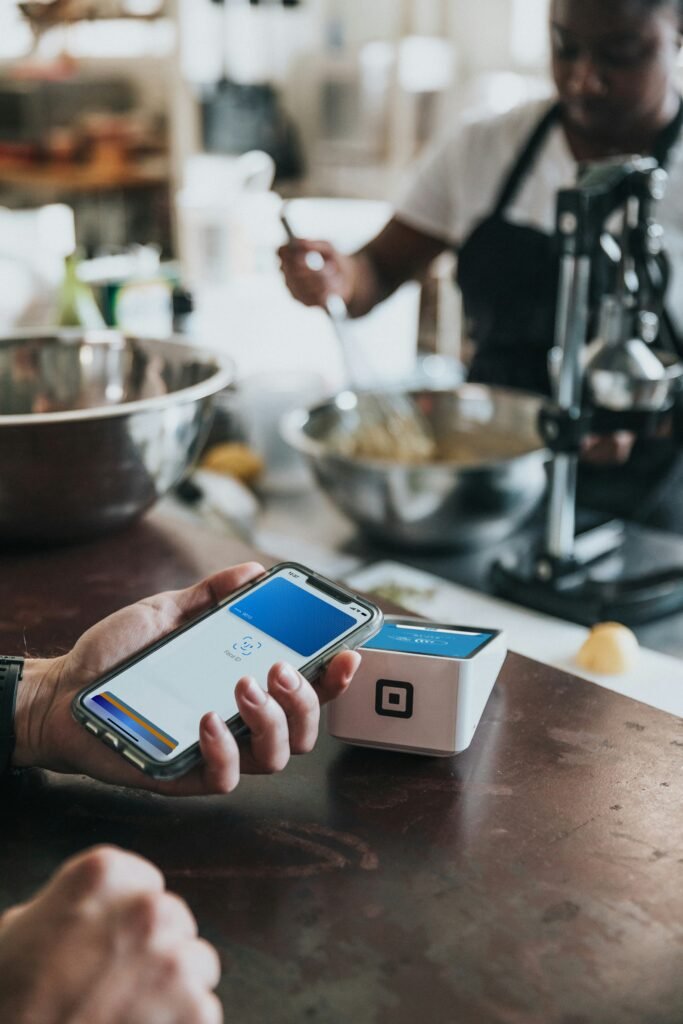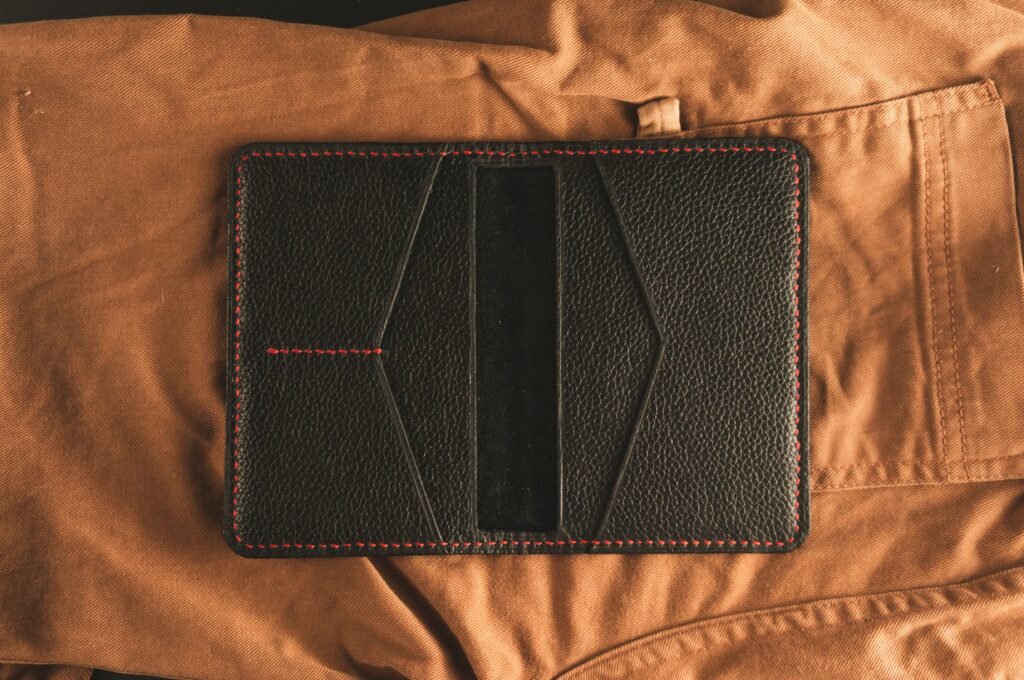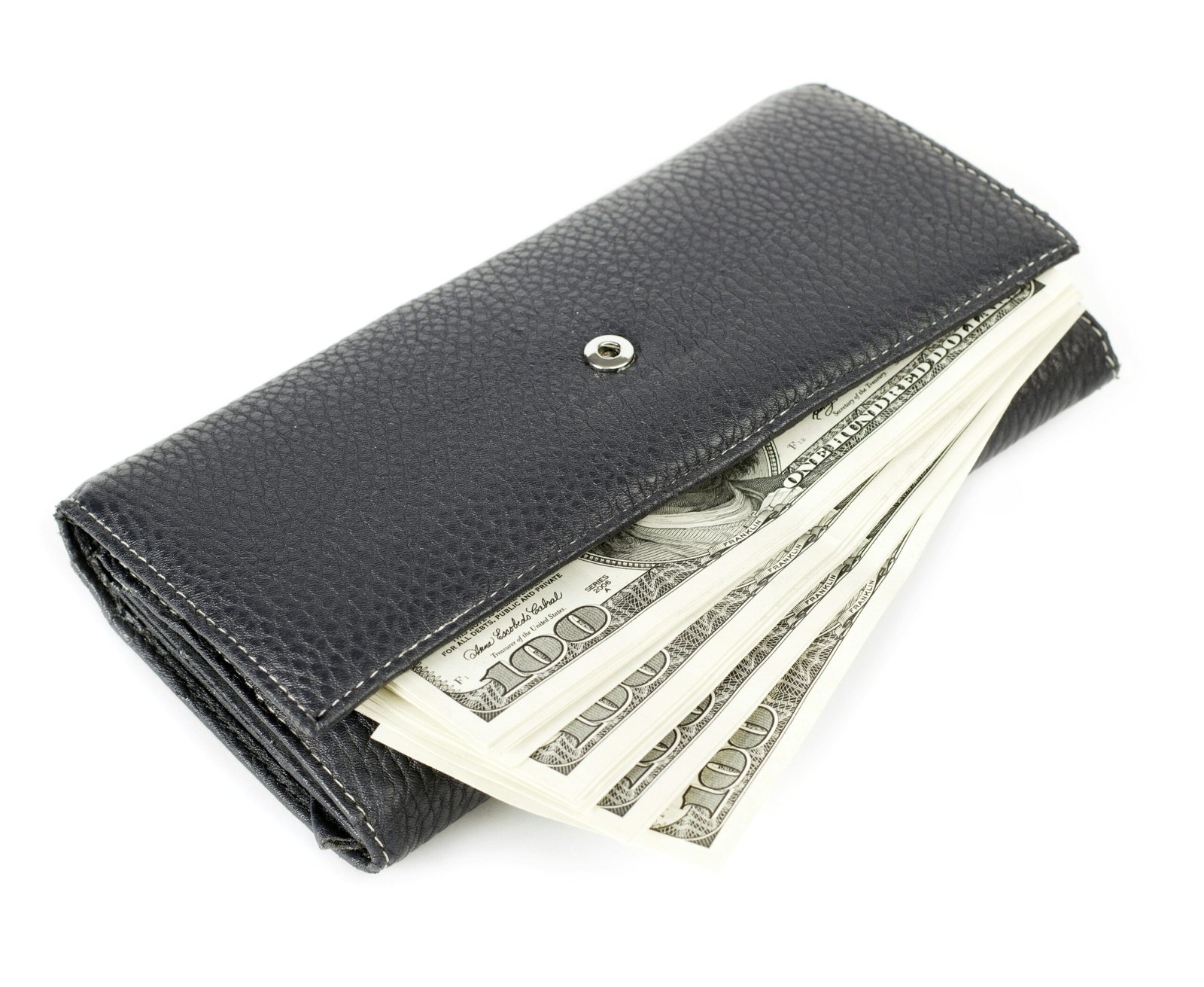Imagine never having to struggle with a bulky wallet that sticks out of your pocket, or constantly having to dig through a cluttered wallet to find your cards. In “A Comprehensive Guide to Wallet Fits,” we’ll take you on a journey through the world of wallet sizes and fits, helping you find the perfect wallet that not only suits your style but also effortlessly fits all your essential cards and cash. From slim and minimalist designs to spacious and expertly organized ones, this article will provide you with invaluable tips and insights to ensure that your wallet not only looks great but also perfectly accommodates your everyday needs. Get ready to revolutionize the way you carry your essentials, saying goodbye to the hassle and hello to convenience.

This image is property of images.unsplash.com.
Determining the Right Wallet Size
When it comes to choosing the perfect wallet, it’s important to consider your needs and preferences. Wallets come in various sizes and designs, and finding the right fit can make a huge difference in your daily life. To determine the right wallet size for you, consider factors such as the dimensions of your current wallet, as well as the number of cards and cash you typically carry.
Consider your needs and preferences
Before diving into the different wallet sizes, take a moment to think about what you need and prefer in a wallet. Do you often find yourself carrying numerous cards? Are you someone who prefers to carry minimal cash? Knowing your needs and preferences will help you narrow down the options and choose a wallet that suits your lifestyle.
Measure the dimensions of your current wallet
Take out your current wallet and measure its dimensions. This will give you an idea of the size you’re used to and help you decide if you want to stick with a similar size or go for something different. Keep in mind that different designs and materials may affect the overall dimensions of the wallet.
Think about the number of cards and cash you carry
Consider the number of cards you usually carry in your wallet. If you have a lot of cards, you’ll need a wallet with ample card slots. On the other hand, if you prefer a minimalist approach and only carry a few cards, you can opt for a more compact wallet. Similarly, think about how much cash you typically carry. If you often have a lot of bills, you’ll want a wallet with a spacious bill compartment.
Types of Wallet Fits
Now that you have a better understanding of the factors to consider when choosing a wallet size, let’s explore some of the different types of wallet fits that are available in the market.
Bi-Fold Wallets
Bi-fold wallets are the most common and traditional wallet design. They fold in half and typically feature card slots on one side and a bill compartment on the other. Bi-fold wallets provide a good balance between storage capacity and compactness, making them a popular choice for everyday use.
Tri-Fold Wallets
If you find yourself needing additional card slots and storage space, tri-fold wallets might be the right fit for you. As the name suggests, these wallets fold into three sections, offering multiple card slots, a bill compartment, and sometimes even a coin pocket. Tri-fold wallets are ideal for those who carry a larger number of cards or prefer to have a separate space for coins.
Slim Wallets
For those who prefer a minimalist and streamlined design, slim wallets are the way to go. These wallets are sleek and compact, often featuring a slim cardholder design with limited card slots and a minimal bill compartment. Slim wallets are perfect for individuals who don’t carry a lot of cards or cash and value a slim and lightweight wallet.
Money Clip Wallets
Money clip wallets combine the functionality of a wallet with the convenience of a money clip. These wallets typically have a cardholder on one side and a money clip on the other, allowing you to securely hold your bills. Money clip wallets are perfect for those who prefer to carry minimal cards and want quick access to their cash.

This image is property of images.unsplash.com.
Understanding the Design Features
When choosing a wallet, it’s important to understand the various design features that can enhance its functionality and usability. Let’s explore some common design features found in wallets.
Card Slots
Card slots are essential for storing your debit and credit cards, ID cards, and other essential cards. Some wallets may have a single slot, while others may have multiple slots to accommodate your needs. When selecting a wallet, consider the number of cards you regularly carry and choose a design with sufficient card slots.
Bill Compartment
The bill compartment is where you’ll keep your cash. Depending on your preferences and the amount of cash you usually carry, you may opt for a wallet with a spacious bill compartment. Some wallets may also have divided bill compartments, allowing you to organize your bills more easily.
Coin Pocket
If you frequently carry coins, a wallet with a designated coin pocket can be a handy feature. A coin pocket typically has a zipper or snap closure to keep your loose change secure and prevent it from mingling with your other belongings.
ID Window
An ID window is a transparent slot designed to hold your identification card, such as your driver’s license or work ID. This feature allows you to easily display your identification without having to remove it from the wallet.
Materials Used in Wallets
Wallets come in a variety of materials, each with its own unique advantages and characteristics. Understanding the different materials used in wallets will help you choose one that aligns with your preferences and needs.
Leather
Leather is a popular choice for wallets due to its durability, timeless appeal, and natural beauty. Leather wallets can come in different types, such as full-grain, top-grain, or genuine leather. Full-grain leather is considered the highest quality as it retains the natural grain pattern and develops a patina over time. However, genuine leather and top-grain leather can also provide a good balance between quality and affordability.
Synthetic Materials
Wallets made from synthetic materials, such as faux leather or nylon, are often more affordable and offer a wider range of colors and designs. These wallets can be a great option if you’re looking for a wallet that is both budget-friendly and stylish. However, keep in mind that synthetic materials may not age as gracefully as genuine leather.
Fabric
Fabric wallets can be made from a variety of materials, such as canvas or polyester. They are often lightweight, flexible, and available in a wide array of colors and patterns. Fabric wallets can be a practical choice for those who prefer a more casual and laid-back style.
Metal
For a unique and modern look, metal wallets are worth considering. These wallets are typically made from materials like aluminum or titanium and offer excellent durability and security. Metal wallets are often minimalist in design, featuring a slim profile and RFID blocking technology.

This image is property of images.unsplash.com.
Choosing the Right Wallet Material
Now that you have a better understanding of the different materials used in wallets, how do you choose the right one for you? Here are some factors to consider when selecting the material for your wallet:
Consider durability
If you’re looking for a long-lasting wallet, genuine leather or top-grain leather is often a good choice. Leather wallets are known for their ability to withstand regular use and develop a rich patina over time. Synthetic materials and fabric wallets can also be durable, but they may not age as gracefully as leather.
Evaluate aesthetics
Consider the overall look and feel you want for your wallet. Leather wallets exude a classic and sophisticated appeal, while synthetic materials offer more diversity in terms of colors and designs. Fabric wallets can add a touch of casualness and playfulness to your style. Choose a material that resonates with your personal aesthetic.
Think about maintenance
Different wallet materials may require different levels of maintenance. Leather wallets may require occasional conditioning to keep them looking their best, while fabric wallets can be easily spot-cleaned. Consider how much time and effort you’re willing to invest in maintaining your wallet and choose accordingly.
Considerations for Card Storage
Now that we’ve covered wallet sizes and materials, let’s delve into the considerations for card storage. Depending on the number of cards you carry, you’ll want to choose a wallet with the appropriate number of card slots and additional storage options.
Number of card slots
Evaluate the number of cards you regularly carry and ensure that the wallet you choose has enough card slots to accommodate them comfortably. It’s also a good idea to leave some extra slots for any new cards you may acquire in the future.
Additional storage options
In addition to card slots, some wallets offer additional storage options such as clear ID windows, hidden pockets, or separate compartments for business cards or loyalty cards. Assess your specific needs and choose a wallet that has the right combination of card slots and additional storage features for you.
Factors to Consider for Cash Handling
While digital payments are becoming increasingly popular, many of us still carry cash for various reasons. If you frequently handle cash, here are some factors to consider when choosing a wallet.
Bill compartment size
Take into account the number and denomination of bills you usually carry. If you often have a significant amount of cash, you’ll want a wallet with a spacious bill compartment to accommodate your needs. On the other hand, if you primarily rely on cards and carry minimal cash, a smaller bill compartment may suffice.
Money clip functionality
If you prefer to keep your bills organized and easily accessible, consider opting for a wallet with a built-in money clip. Money clip wallets feature a clip that securely holds your bills in place, preventing them from getting disorganized or misplaced.
Security and Protection Features
When it comes to your personal belongings, security and protection are of utmost importance. Wallets can offer various security features to keep your cards and personal information safe.
RFID blocking technology
With the rise of contactless payment technology, RFID blocking technology has become increasingly important. RFID blocking wallets are designed to protect your cards from unauthorized scanning or skimming, ensuring that your sensitive information remains secure.
Zipper closures
If you prefer added security and want to protect your belongings from accidental spills or falls, consider a wallet with a zipper closure. Zipper closures offer an extra layer of protection, keeping your cards, cash, and other essentials safe and secure.
Hidden compartments
Some wallets may have hidden compartments or secret pockets that provide an extra layer of security and privacy. These compartments can be used to store valuables or items that you want to keep separate from your everyday essentials.
Wallet Fits for Different Occasions
Different occasions may call for different wallet sizes and designs. Here’s a breakdown of wallet fits for various situations:
Everyday use
For day-to-day use, consider a wallet that strikes the right balance between functionality and convenience. Bi-fold wallets or slim wallets are often perfect for everyday use, offering enough space for your cards and cash without being too bulky.
Travel
When traveling, it’s important to have a wallet that can store all your essential cards, travel documents, and currency securely. Look for a wallet with multiple card slots, a spacious bill compartment, and perhaps even a hidden pocket for added security. Travel wallets are often designed to be RFID blocking, providing an extra layer of protection against identity theft.
Formal events
For formal events, you’ll want a wallet that complements your attire without compromising on functionality. Slim wallets or money clip wallets are suitable choices for formal occasions, as they offer a sophisticated and minimalist design.
Brand and Price Considerations
Before making a final decision, it’s worth considering the brand and price range you’re comfortable with. Research reputable brands known for their quality craftsmanship and durability. Look for reviews and recommendations to ensure you’re investing in a reliable product. Additionally, set a budget that aligns with your financial situation and consider wallets within that price range.
With this comprehensive guide to wallet fits, you’re now equipped with the knowledge to choose the perfect wallet that suits your needs, preferences, and lifestyle. Whether you opt for a bi-fold, tri-fold, slim, or money clip wallet, remember to consider the design features, materials used, and the occasions you’ll be using it for. Happy wallet shopping!
